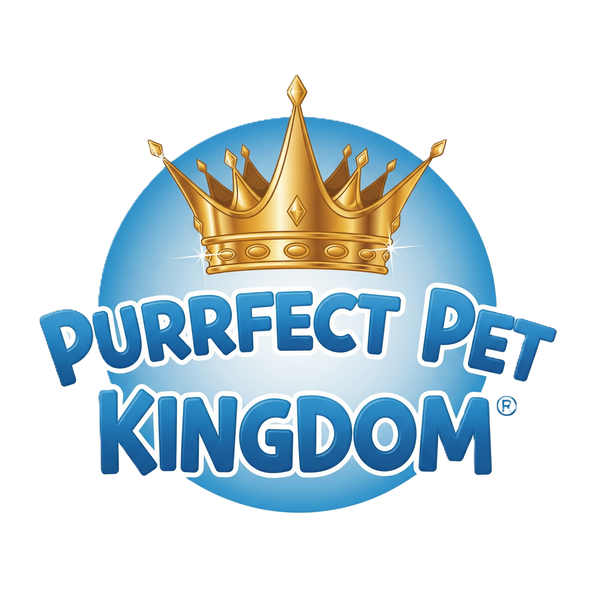
Cat Digestive Health 101: Essential Tips for Pet Owners
Cat Digestive Health 101: Signs, Solutions & Happy Tummies 🐱
The definitive guide to banishing the 'bleh' and restoring royal wellness to your kitty’s kingdom.
Snippet: Is your cat’s tummy making more noise than a purring engine? Digestive issues are the top reason for vet visits, but they don't have to be a mystery! From decoding the litter box to the magic of pumpkin and probiotics, we dive deep into soothing sensitive stomachs. Learn how to turn digestive distress into purrfect health with our comprehensive guide. 🥣
Greetings, loyal servants of the feline overlords! 👑
We all know the sound. It usually happens at 3:00 AM. It starts with a low, rhythmic heaving, followed by the unmistakable sound of a wet splat on your favorite rug (never the tile, always the rug). It is the song of the upset stomach, and it is the bane of cat parents everywhere. 📢
Digestive health is the cornerstone of your cat's overall vitality. When the tummy is happy, the coat shines, the energy levels soar, and the litter box is… well, manageable. But when the gut is unhappy? It’s a chaotic mix of stress, mess, and worry. You find yourself analyzing vomit consistency like a forensic scientist and Googling "cat poop charts" at dinner time. 🕵️♀️
Fear not! We are embarking on a deep dive into the Kingdom of Feline Digestion. We will unravel the mysteries of the obligate carnivore's gut, explore the magical ingredients that soothe the savage belly, and look at how stress and environment play a massive role in your cat's "output." Let's get those tummies settled and those purrs rumbling! 🐈
📜 The Royal Scroll: Jump to Section
- 👉 The Messy Reality & Our Promise
- 👉 The Carnivore Code: How Their Gut Works
- 👉 Decoding the Distress Signals (Vomit & Poop)
- 👉 Nutritional Solutions & Power Ingredients
- 👉 Zen & The Art of Digestion: Stress & Comfort
- 👉 Frequently Asked Questions
The "Litter Box Blues" & Our Promise 😿
A sensitive stomach isn't just annoying to clean up after; it's miserable for your cat. Chronic vomiting, diarrhea, or constipation can lead to dehydration, nutrient deficiencies, and a dull, lackluster coat. Many cat owners think that throwing up a few times a week is "normal" for cats. Spoiler Alert: It's not!
The problem is often a mismatch between what we feed them, how we feed them, and their unique biological needs. Add in environmental stress (like that new furniture you bought), and you have a recipe for GI disaster.
Here is our Promise: By understanding the "why" behind the tummy trouble, you can fix the "what." We will guide you through the best foods, the supplements that actually work, and the lifestyle tweaks that turn a barfy kitty into a happy gourmand. A clean rug and a happy cat await! ✨
The Carnivore Code: How Their Gut Works 🦁
To fix the machine, you must understand the blueprint. Cats are Obligate Carnivores. This isn't a lifestyle choice; it's biology. Their digestive tract is significantly shorter than a human's or a dog's because it is designed to process meat quickly and efficiently.
[Image of cat digestive system]
Key Design Features:
- Acidic Environment: A cat's stomach is highly acidic (pH 1-2) to break down raw proteins and kill bacteria found in prey. 🦠
- Zero Carb Requirement: They have very few enzymes (amylase) to break down carbohydrates. High-carb kibble is often the culprit for bloating and gas because their bodies literally don't know what to do with it.
- Hydration Hunter: In the wild, cats get moisture from their prey. They have a low thirst drive. Dry food + low thirst = chronic dehydration and constipation. 💧
Decoding the Distress Signals 🚦
Okay, put down your snacks. We need to talk about the "output." Your cat's waste is the best health report card you will ever get.
The Vomit Rainbow 🌈
Not all barf is created equal. The color and texture tell a story:
- Yellow Foam/Liquid: Usually bile. This means the stomach is empty. It often happens in the morning if the gap between dinner and breakfast is too long (The "Hunger Puke").
- Undigested Tube of Food: "Regurgitation." This happens when they eat too fast (the "Scarf and Barf"). The food never really hit the stomach acid.
- White Foam: Can indicate indigestion or hairballs irritating the lining.
The Scoop Scale 💩
When scooping the litter box, look for the "Goldilocks" poop:
Type 1 (Hard Pellets): Constipation. Needs more water! 🌵
Type 2 (The Tootsie Roll): Firm, segmented, moist but holds shape. Perfection! 🏆
Type 3 (Soft Serve): Not great. Indicates inflammation or dietary intolerance.
Type 4 (Liquid/Puddle): Diarrhea. Urgent vet visit if it lasts more than 24 hours. 🚨
Nutritional Solutions & Power Ingredients 🥣
So, how do we fix it? We start by adding ingredients that support the gut lining and microbiome.
1. Probiotics: The Good Soldiers 🛡️
Your cat’s gut is a battlefield between good and bad bacteria. Probiotics (like Enterococcus faecium or Bacillus coagulans) are reinforcements for the good side. They help digest food, manufacture vitamins, and keep the immune system strong.
2. Pumpkin: The Great Regulator 🎃
Plain, canned pumpkin (not pie filling!) is a miracle worker. It is high in soluble fiber.
Why it works: If the cat has diarrhea, pumpkin absorbs the excess water to firm it up. If the cat is
